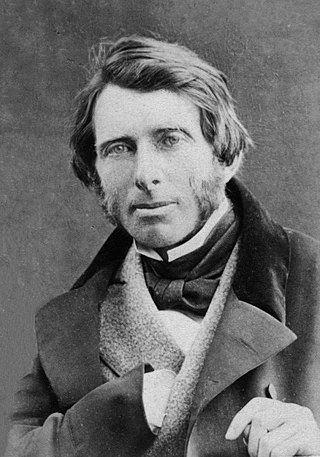
John Ruskin was an English writer, philosopher, art historian, art critic and polymath of the Victorian era. He wrote on subjects as varied as geology, architecture, myth, ornithology, literature, education, botany and political economy.
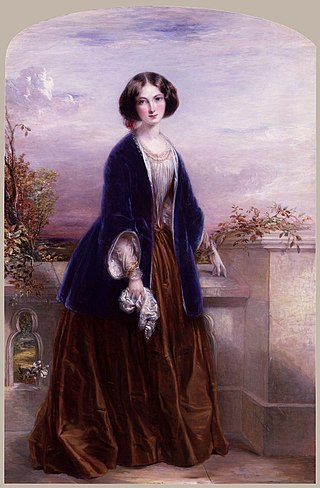
Euphemia Chalmers Millais, Lady Millais was a Scottish artists' model and writer who was married to Pre-Raphaelite painter John Everett Millais. She had previously married the art critic John Ruskin, but she left him with the marriage never having been consummated; it was subsequently annulled. This famous Victorian "love triangle" has been dramatised in plays, films, and an opera.

Sir John Everett Millais, 1st Baronet was an English painter and illustrator who was one of the founders of the Pre-Raphaelite Brotherhood. He was a child prodigy who, aged eleven, became the youngest student to enter the Royal Academy Schools. The Pre-Raphaelite Brotherhood was founded at his family home in London, at 83 Gower Street. Millais became the most famous exponent of the style, his painting Christ in the House of His Parents (1849–50) generating considerable controversy, and he produced a picture that could serve as the embodiment of the historical and naturalist focus of the group, Ophelia, in 1851–52.

The Pre-Raphaelite Brotherhood was a group of English painters, poets, and art critics, founded in 1848 by William Holman Hunt, John Everett Millais, Dante Gabriel Rossetti, William Michael Rossetti, James Collinson, Frederic George Stephens and Thomas Woolner who formed a seven-member "Brotherhood" partly modelled on the Nazarene movement. The Brotherhood was only ever a loose association and their principles were shared by other artists of the time, including Ford Madox Brown, Arthur Hughes and Marie Spartali Stillman. Later followers of the principles of the Brotherhood included Edward Burne-Jones, William Morris and John William Waterhouse.
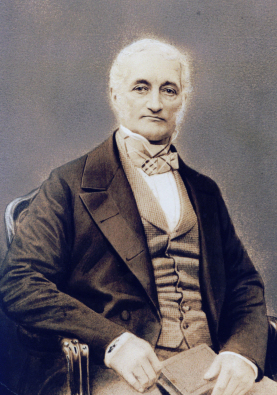
William Burn was a Scottish architect. He received major commissions from the age of 20 until his death at 81. He built in many styles and was a pioneer of the Scottish Baronial Revival, often referred to as the golden age of Scottish architecture.
Events from the year 1848 in art.

Edith Penelope Mary Lutyens was a British author who is principally known for her biographical works on the philosopher Jiddu Krishnamurti.

Elizabeth, Lady Eastlake, born Elizabeth Rigby, was an English author, art critic and art historian, who made regular contributions for the Quarterly Review. She is known not only for her writing but also for her significant role in the London art world.

St Ninian's Cathedral in Perth is a cathedral of the Scottish Episcopal Church in the Diocese of St Andrews, Dunkeld and Dunblane.
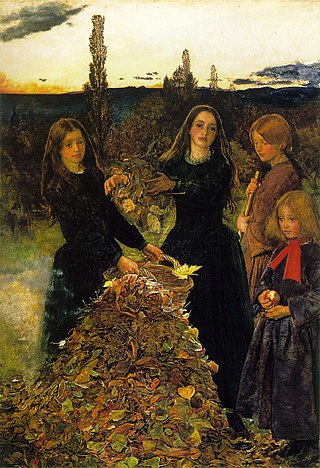
Autumn Leaves (1856) is a painting by John Everett Millais exhibited at the Royal Academy in 1856. It was described by the critic John Ruskin as "the first instance of a perfectly painted twilight." Millais's wife Effie wrote that he had intended to create a picture that was "full of beauty and without a subject".
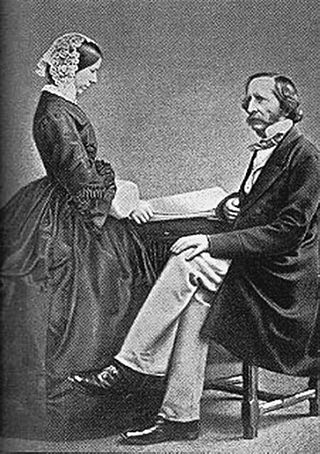
Pauline, Lady Trevelyan was an English painter, noted for single-handedly making Wallington Hall in Northumberland a centre of High Victorian cultural life, and for enchanting with her intellect and art John Ruskin, Swinburne, Elizabeth Barrett Browning, Robert Browning, Christina Rossetti, Dante Gabriel Rossetti, William Michael Rossetti, Thomas Carlyle, John Everett Millais, and other members of the Pre-Raphaelite Brotherhood. She was married in May 1835 to Sir Walter Calverley Trevelyan, 6th Baronet.
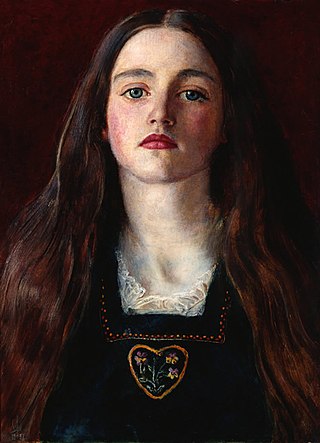
Sophia Margaret "Sophie" Gray, later Sophia Margaret Caird, was a Scottish model for her brother-in-law, the Pre-Raphaelite painter John Everett Millais. She was a younger sister of Euphemia "Effie" Gray, who married Millais in 1855 after the annulment of her marriage to John Ruskin. The spelling of her name was, after around 1861, sometimes "Sophy," but only within the family. In public she was known as Sophie and later in life, after her marriage, as Sophia.

High Victorian Gothic was an eclectic architectural style and movement during the mid-late 19th century. It is seen by architectural historians as either a sub-style of the broader Gothic Revival style, or a separate style in its own right.

Edinburgh City Chambers in Edinburgh, Scotland, is the meeting place of the City of Edinburgh Council and its predecessors, Edinburgh Corporation and Edinburgh District Council. It is a Category A listed building.
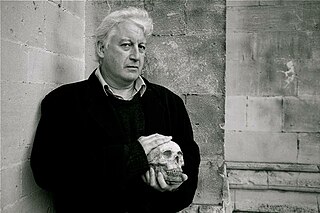
Kevin Jackson was an English writer, broadcaster, filmmaker and pataphysician.
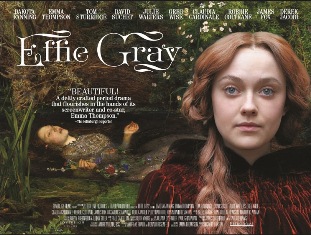
Effie Gray is a 2014 British biographical film written by Emma Thompson and directed by Richard Laxton, starring Dakota Fanning, Emma Thompson, Julie Walters, David Suchet, Derek Jacobi, James Fox, Claudia Cardinale, Greg Wise, Tom Sturridge, and Robbie Coltrane, in his final film appearance before his death in 2022. It is based on the true story of John Ruskin's marriage to Euphemia Gray and the subsequent annulment of their marriage.
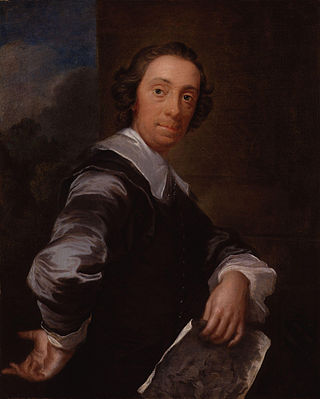
Richard Bentley was an English writer and designer who was friends with Thomas Gray and Horace Walpole.
Henry Hake Seward was an English architect who practised in the early 19th century.

Kinnoull Parish Church is a Church of Scotland church in the Kinnoull area of Perth, Perth and Kinross, Scotland. A Kinnoull Church appears in documents when it was granted to Cambuskenneth Abbey in 1361. It was rebuilt in 1779 but demolished in 1826 after the completion of a church on the Perth side of the River Tay, which flows a short distance behind the church.

















